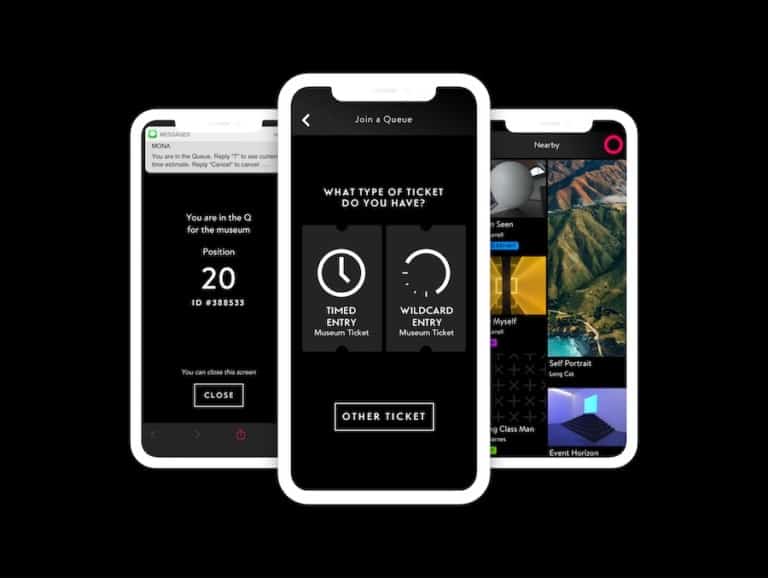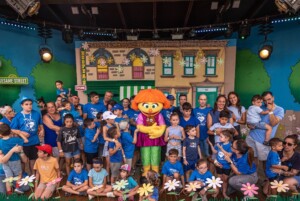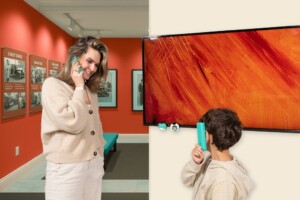Art Processors, the experiential design consultancy, has worked with its long-term partner, the Museum of Old and New Art (Mona) in Hobart, Australia, to help it reopen safely in the wake of the global pandemic.
Mona, a key contributor to the local economy, temporarily closed in March 2020 and reopened in December 2020.
A visit to Mona is a unique experience, one which allows visitors to discover its surreal and sublime exhibitions at their own pace, thanks to its innovative app, The O. This has been developed by Art Processors in close partnership with the gallery over the past decade and has now been instrumental in providing a safe visitor experience post-COVID.
Adapting to the new normal
The museum’s website says, “The O is here to help you explore the deep recesses of David’s lounge room.” It can be accessed through a downloaded app on a visitors own device, or by using an in-house device, and informs guests about the exhibits, placing traditional wall labels for a more personalised experience.
Art Processors co-founder and Chief Design & Technology Officer, Nic Whyte, calls The O “a non-linear experience…Mona messes with the typical curatorial approach, and The O very much supports that method. It doesn’t tell the visitors where to go.”
However, the pandemic has changed how we move through public spaces. So how did this not-so-normal museum return to normal in the age of COVID? As it geared up for both the reopening in December and its 10th-anniversary celebrations in January 2021, the museum had a big task ahead. Operations needed to be changed to allow for new COVID-19 regulations, such as visitor number caps, flow restrictions, cleaning processes and more.
The O
The O had to play a significant role in facilitating many of these changes. So working closely with Mona’s key staff, Art Processors revamped and rewrote The O to extend its functionality while still interpreting artworks and providing the same quality experience that visitors are accustomed to.
“Our biggest challenge has been to maintain the integrity of the explorative nature of the Mona experience,” says Anthony White, Mona’s Front of House Operations Manager.
“In a post-COVID environment, we’re trying to keep people flowing and avoiding pinch-points. In some ways, it goes against Mona’s explorative element, where we encourage people to go where the experience takes them. How do we keep the integrity of the experience but gently guide people through the spaces, so we’re getting good flow?”
White says artworks with a limited viewing capacity presented a significant challenge:
“In a busy museum context, when you’ve got artworks that can only be seen by two or three people or even one person at a time, managing that can be problematic. That’s something we’ve worked on for a long time, but it’s even more crucial now.
“We had to be very responsive because the consequences have never been as great. It’s something we had to get right.”
Preparing to reopen
For the reopening, the museum’s curatorial staff carried out a complete rehang of the permanent exhibition. “It’s the biggest one we’ve done since the opening 10 years ago and very much a focus on David Walsh’s collection,” says Jarrod Rawlins, Senior Curator at Mona.
To limit the spread of the virus, Mona stopped providing The O on in-house devices: “We had to work out how not to give out a device we’ve been giving out for a decade while relying on that device to deliver the museum experience,” says Rawlins.
“We’ve always had these iPod touches available. Suddenly, we had to fast-track the development of the BYO option, especially the Android application, which we’d never offered before.
“Knowing we didn’t want to reinvent the wheel, the biggest quandary we faced was how we communicate to gallery-goers that you have to download this app before you arrive at the museum to experience the exhibition in the way we’ve designed it.”
Re-imagining The O
Whyte explains the challenge of expanding The O’s functional scope in reaction to the new COVID requirements while keeping the core intact:
“The primary objective of The O is to deliver interpretive material about the artworks. It’s to replace all labels. So above everything else, it needs to do that. And by adding extra utility maps and access to the visitor guide, access to the food and beverage offerings, and queuing systems, you start tipping the balance there.”
Previously, the BYO option was only available to Apple users, but following the removal of the in-house devices, developing an Android application for The O was essential. Art Processors was able to get the Android version up and running quickly, and it has since been downloaded more than 7,200 times, 26% of the app’s total downloads for the period.
“I had anticipated it was going to be a large body of work because The O is a big application. I’d call it deceptively simple,” says Whyte. “But it is a huge amount that goes into making the application, we go the extra length to make sure visitors don’t see error messages, and everything works. It knows where you are; it knows what artworks are around you because that’s the primary goal. And that’s not easy to get all those things right.”
The new version of The O has a host of new features, such as:
- Managing visitor density and flow management through a ‘wildcard’ ticketing system and a revised virtual queuing system
- Adding location-based push notifications with an SMS waitlist to direct visitors to events like outdoor live music at the museum, ensuring visitors are always informed of entertaining options
- Incorporating more visitor guide elements for amenities and services both within and outside the museum.
These features give the museum control over visitor numbers and movement, keeping the attraction safe. In addition, the new functionality minimizes visitors’ anxieties and waiting times.
Advance booking
With advance booking a must, Mona introduced two options: book a specific time or book a ‘wildcard’ ticket. Art Processors helped to build the wildcard waitlist, where people who can’t commit to a specific time are sent a message when they can enter the museum.
“We’re relying on ticketing systems like the wildcard system to ensure we have a capacity in the building we can safely manage,” says White. “What we realized on reopening was that COVID allowed us to take the logic inherent in things like the digital queuing system and expand it much wider to a holistic visitor companion.
“We’ve kept that explorative Mona experience along with controlling our numbers. The experience is enhanced because you get enough numbers through for a good vibe, and you hold that throughout the day.”
A flexible system
The O also allows Mona to stop handing out printed guides, says Whyte:
“Handing things out is a bit of a no-no with COVID. With factors like printing costs, there are so many unknowns in having a museum open at the moment. You need to be very dynamic and be able to change things, even close things, quickly; so a digital alternative makes sense.
“It’s about making sure the system is flexible because humans are chaotic and environments are chaotic, and we need to own that and find ways to make sure we’re not making it worse.”
Rawlins says The O’s new features have been received well by guests:
“I’ve been watching the audience and how they’re interacting with the device, the artwork and the spaces. It seems pretty seamless to me. Everyone seems to have got their app downloaded and working well, which for me is the best outcome.
“Art Processors did a great job to make it look like nothing changed.”
Whyte and his team will continue to tweak the app as the COVID situation unfolds, as well as considering what lessons Art Processors can learn from this process, to apply to other projects:
“We want to continue looking at ways that technology and the data that we collect through technology, isn’t just dumbing the experience down, but subverting it, and still giving control and agency to the visitor,” he says.
Last year, Art Processors also announced that it is leading the artistic and digital transformation of The Australian Stockman’s Hall of Fame and Outback Heritage Centre.
Images of Mona courtesy of Jesse Hunniford

















